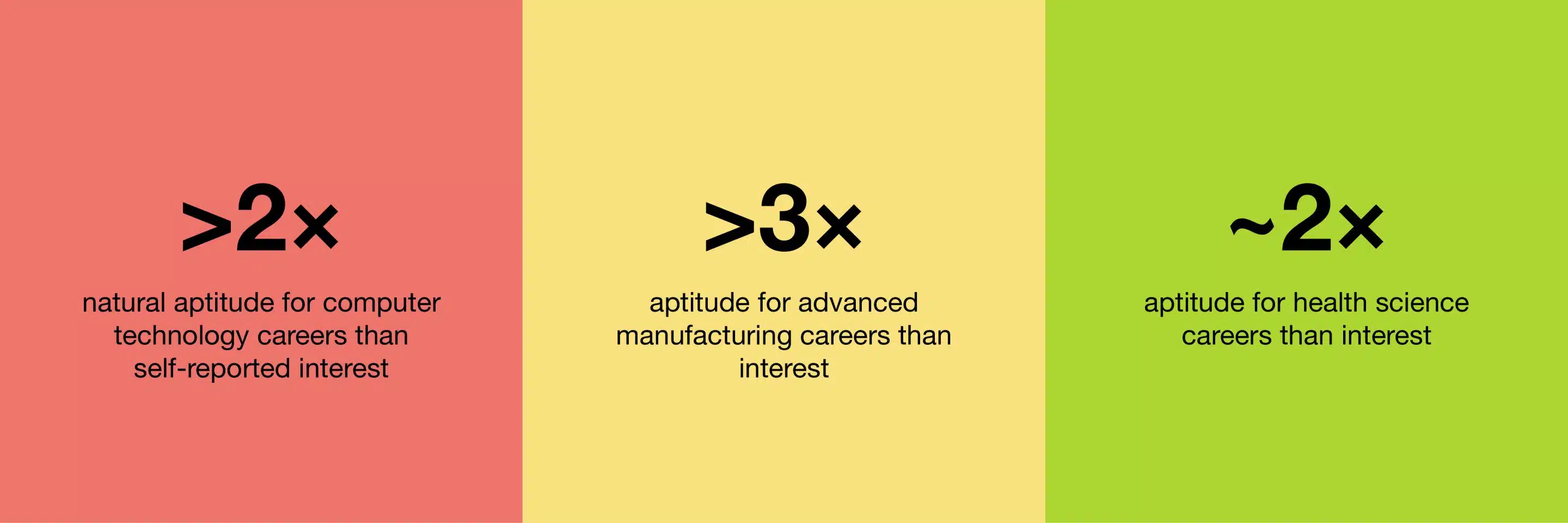The gap is the career exposure gap. It’s the divide between industry needs and students’ chosen career pathways.
The U.S. career exposure gap
It’s the disconnect between what a student is capable of and what a student knows about. It happens when students look at careers based on their life experiences or media consumption. Their limited experience limits the careers they know about. Their lack of self awareness also limits what they believe they’re capable of.
To reveal the career exposure gap, YouScience analyzed the most-frequent aptitude and interest-based career cluster recommendations for U.S. high school students for the 2021 calendar year. Data came from anonymized YouScience Discovery aptitude-based college and career assessment results.
The analysis revealed that the career exposure gap starts in secondary school where U.S. students have:2
- More than 2x the natural aptitude for computer technology careers than self-reported interest.
- More than 3x the aptitude for advanced manufacturing careers than interest.
- Almost 2x the aptitude for health science careers than interest.
That means that U.S. students have the innate ability to excel in careers they haven’t been adequately exposed to, don’t know they have the ability to do, and/or have been biased away from pursuing.
The solution
Policymakers and industry and education leaders can close the gap and help reduce or eliminate the skills gap and talent shortage and get more students ready for — and interested in — the in-demand jobs of today and tomorrow. How?
- Help students find their “why.”
- Close the exposure gap and show students opportunities.
- Make education more relevant using career-connected learning.
- Create connections between education and industry.
Learn more about the career exposure gap and recommended solutions in the full State of the Future U.S. Workforce: Student Ability Report.
1 The $8.5 Trillion Talent Shortage, Korn Ferry, https://www.kornferry.com/insights/this-week-in-leadership/talent-crunch-future-of-work
2 The State of the Future U.S. Workforce: Student Ability Report, YouScience, July 2022, https://resources.youscience.com/student-ability-report


